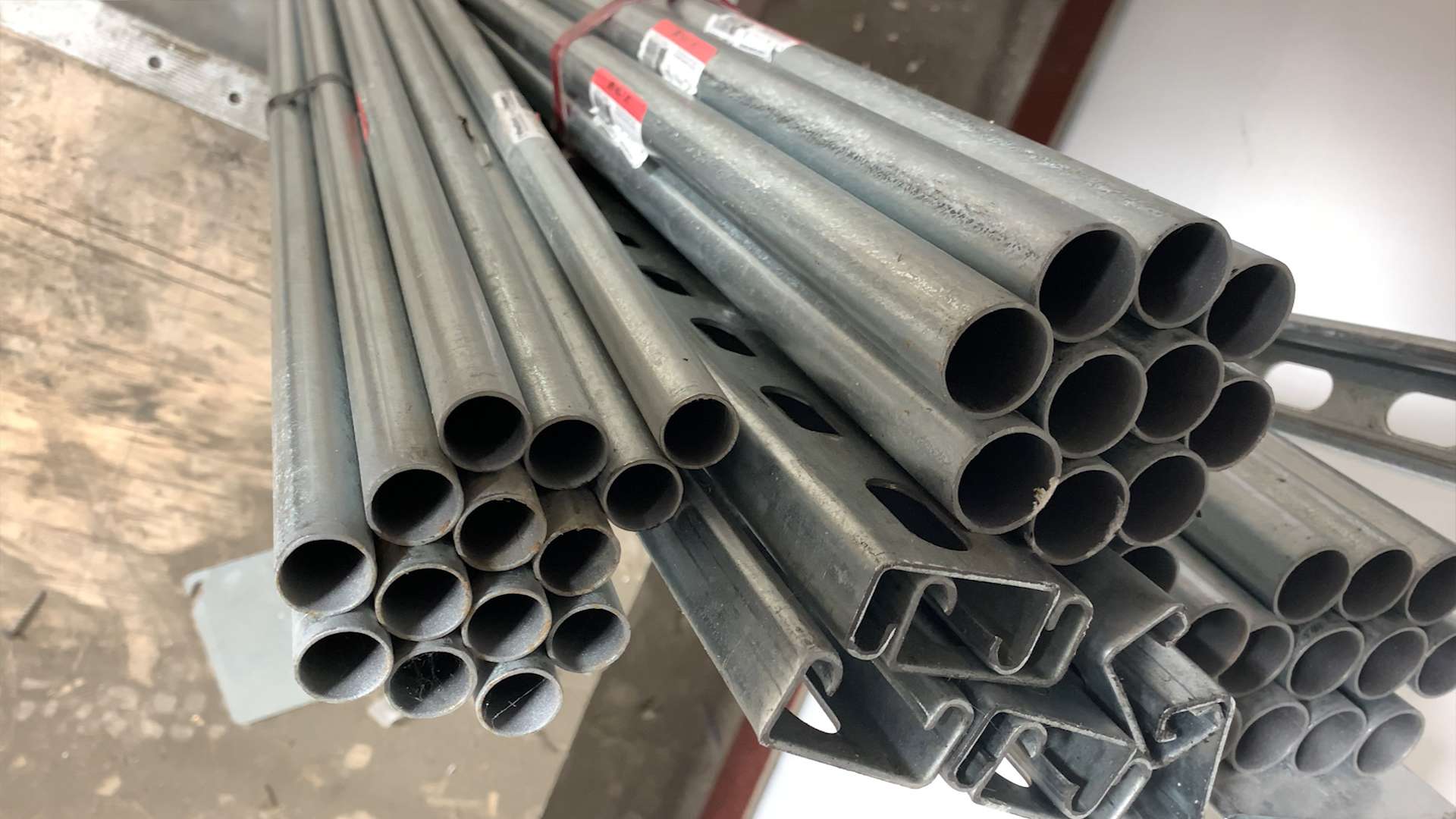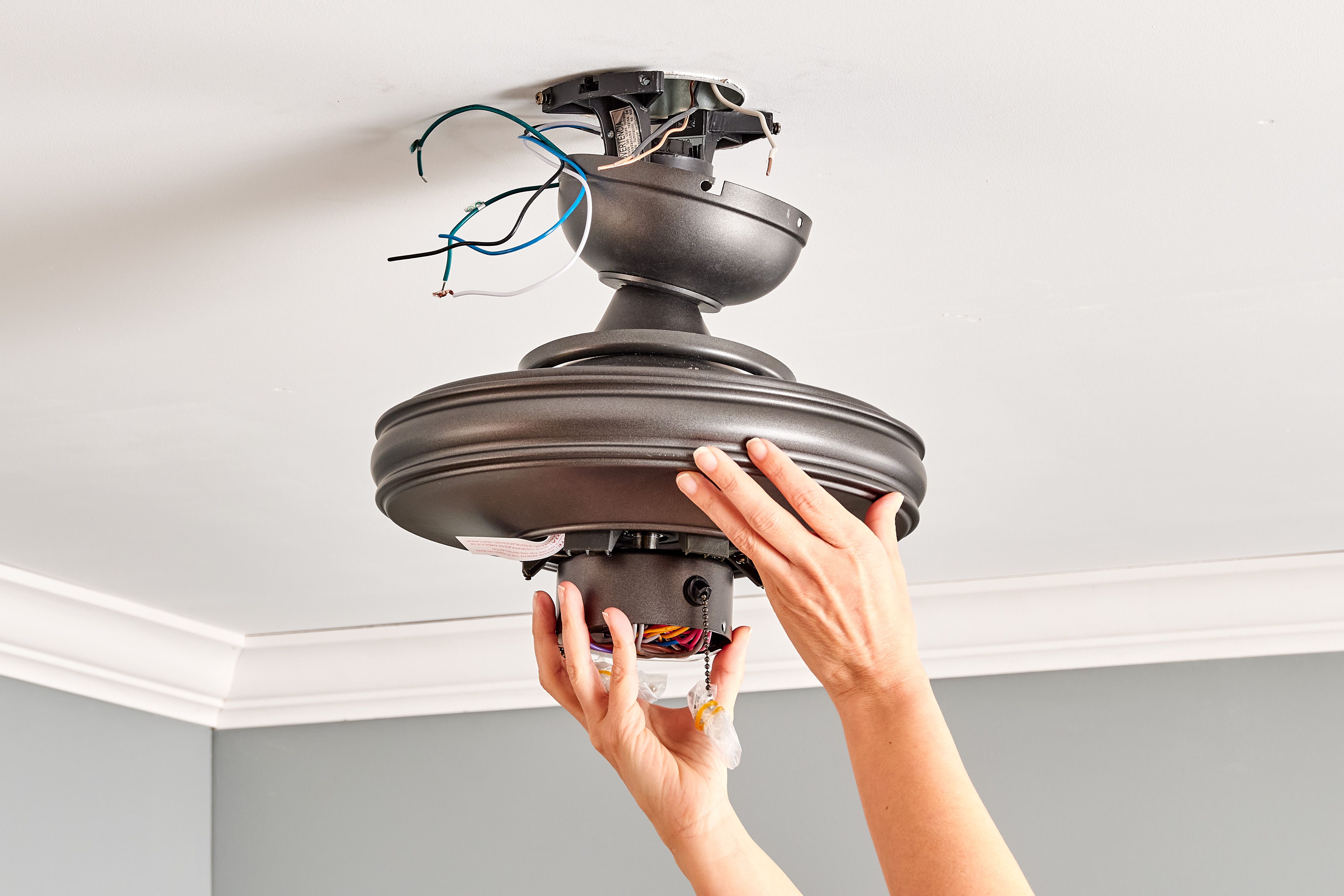

Articles
How Much Weight Can EMT Conduit Hold
Modified: October 20, 2024
Looking for information on how much weight EMT conduit can hold? Our articles provide expert insights and guidelines to help you make informed decisions.
(Many of the links in this article redirect to a specific reviewed product. Your purchase of these products through affiliate links helps to generate commission for Storables.com, at no extra cost. Learn more)
Introduction
Welcome to our comprehensive guide on the weight capacity of EMT conduit. If you’re involved in construction or electrical installations, you know how crucial it is to understand the capabilities and limitations of the materials you work with.
EMT conduit, also known as Electrical Metallic Tubing, is a commonly used type of conduit in electrical systems. It provides a sturdy enclosure for electrical wires and offers protection against damage and interference. One key aspect to consider when working with EMT conduit is its weight capacity, as this will determine how much weight it can safely support.
In this article, we will delve into the factors that affect the weight capacity of EMT conduit and explore typical weight capacities for different conduit sizes. We will also discuss the key considerations you need to keep in mind to ensure safety and compliance when determining the weight capacity.
By the end of this article, you will have a solid understanding of how much weight EMT conduit can hold and be equipped to make informed decisions in your electrical installations.
Key Takeaways:
- EMT conduit weight capacity is influenced by factors such as size, material, installation method, supporting structures, and environmental conditions. Understanding load ratings and typical weight capacities for different conduit sizes is crucial for safe and compliant electrical installations.
- Prioritizing safety and compliance when working with EMT conduit involves following electrical codes, consulting manufacturer specifications, accurately calculating total load, using proper installation techniques, conducting regular maintenance, seeking professional assistance, and documenting installation and load capacity.
Read more: How Much Weight Can Attic Hold
What is EMT Conduit?
EMT conduit is a type of electrical conduit made from a thin-walled metal tube, typically made of steel, that is designed to protect and route electrical wires in various settings. The acronym EMT stands for Electrical Metallic Tubing, and it is commonly used in residential, commercial, and industrial applications.
EMT conduit is lightweight, making it easy to handle and install. It is also highly resistant to corrosion, which ensures its durability in both indoor and outdoor environments. The conduit is available in various diameters, ranging from ½ inch to 4 inches, to accommodate different electrical wiring needs.
One of the key advantages of EMT conduit is its affordability compared to other types of conduit, such as rigid metal conduit (RMC) or intermediate metal conduit (IMC). This makes it a popular choice for electrical installations, especially in projects with budget constraints.
EMT conduit is constructed with a smooth and continuous interior surface, allowing for easy wire pulling during installation. It also offers a high level of protection for electrical cables, shielding them from physical damage, moisture, and other external factors that could compromise their integrity.
Additionally, EMT conduit is known for its flexibility, which allows it to be easily bent and maneuvered around obstacles. This flexibility makes it a versatile option in situations where tight corners or irregular routes are involved.
It’s important to note that EMT conduit is primarily used as a protective conduit and is not intended to support heavy loads. The weight capacity of EMT conduit is determined by various factors that we will discuss in the next section.
Now that we have a solid understanding of what EMT conduit is, let’s explore the factors that affect its weight capacity.
Factors Affecting Weight Capacity
Several factors come into play when determining the weight capacity of EMT conduit. It’s essential to consider these factors to ensure the safe and efficient installation of electrical systems. Let’s explore the key factors that play a role in determining the weight capacity of EMT conduit:
- Conduit Size: The size of the EMT conduit directly affects its weight capacity. Generally, larger conduit sizes have higher weight capacities as they have a larger diameter and thicker walls, providing more structural strength.
- Conduit Material: While EMT conduit is typically made of steel, the type and quality of steel used can influence its weight capacity. High-quality steel with thicker walls can withstand heavier loads compared to lower-grade steel.
- Installation Method: The way EMT conduit is installed also impacts its weight capacity. Proper installation techniques, such as securely fastening the conduit to supporting structures and using appropriate fittings, ensure that the conduit can bear the intended load without any adverse effects.
- Supporting Structures: The type and condition of the supporting structures play a significant role in determining the weight capacity of EMT conduit. The conduit must be securely attached to strong and stable structures to avoid sagging or collapsing under the weight of the wires or any other loads.
- Environmental Conditions: External factors such as temperature, humidity, and exposure to corrosive substances can impact the weight capacity of EMT conduit. Adverse environmental conditions can weaken the conduit over time, reducing its overall load-bearing capability.
It’s important to consider all these factors collectively rather than focusing on just one aspect. Proper evaluation of these factors ensures that the weight capacity of the EMT conduit meets the specific requirements of the electrical installation.
Now that we understand the factors that affect the weight capacity of EMT conduit, let’s dive deeper into load ratings and how they are determined.
Understanding Load Ratings
Load ratings are crucial in determining the weight capacity of EMT conduit. Load ratings refer to the maximum amount of weight that a conduit can safely support without compromising its structural integrity or posing a risk to the electrical system. These ratings are determined through testing and follow industry standards.
Load ratings for EMT conduit are typically expressed in terms of pounds per linear foot (lbs/ft) or kilograms per meter (kg/m). The rating indicates the maximum weight that can be safely suspended from the conduit over a certain length.
It’s important to note that load ratings can vary based on the conduit size and material. Larger conduit sizes with thicker walls generally have higher load ratings compared to smaller sizes. Additionally, load ratings can differ depending on whether the conduit is being used vertically or horizontally.
Load rating values are typically provided by the conduit manufacturer and can be found in product catalogs or specifications. It’s crucial to consult these ratings and choose the appropriate conduit size and material that meet the weight requirements of your specific electrical installation.
When determining the load capacity of EMT conduit, it’s essential to consider both the weight of the electrical wires and any additional loads that will be placed on the conduit, such as fixtures, junction boxes, or other accessories. By calculating the combined weight accurately, you can ensure that the selected conduit is capable of safely supporting the entire load.
It’s also worth noting that load ratings assume proper installation methods, such as securely fastening the conduit to supporting structures and using appropriate fittings. Deviating from the recommended installation practices may compromise the conduit’s weight capacity and pose a safety risk.
Now that we have a better understanding of load ratings and their significance, let’s explore the typical weight capacities of different EMT conduit sizes.
When determining how much weight EMT conduit can hold, it’s important to consider the size and thickness of the conduit, as well as the method of installation. Generally, EMT conduit can support light to moderate loads, but for heavier loads, it’s best to consult with a structural engineer or refer to local building codes for specific guidelines.
Typical Weight Capacities of EMT Conduit Sizes
The weight capacity of EMT conduit varies depending on the size and material used. Here are some typical weight capacities for different sizes of EMT conduit:
- 1/2 inch EMT Conduit: This is the smallest size of EMT conduit commonly used. It has a typical weight capacity ranging from 8 to 10 pounds per linear foot (lbs/ft).
- 3/4 inch EMT Conduit: The weight capacity of 3/4 inch EMT conduit is typically between 16 and 20 lbs/ft.
- 1 inch EMT Conduit: The weight capacity of 1 inch EMT conduit ranges from 34 to 40 lbs/ft.
- 1 1/4 inch EMT Conduit: The weight capacity of 1 1/4 inch EMT conduit is typically between 54 and 66 lbs/ft.
- 1 1/2 inch EMT Conduit: This size of EMT conduit has a weight capacity ranging from 80 to 98 lbs/ft.
- 2 inch EMT Conduit: The weight capacity of 2 inch EMT conduit is typically between 190 and 212 lbs/ft.
- 2 1/2 inch EMT Conduit: The weight capacity of 2 1/2 inch EMT conduit ranges from 270 to 314 lbs/ft.
- 3 inch EMT Conduit: This size of EMT conduit commonly has a weight capacity between 378 and 424 lbs/ft.
- 4 inch EMT Conduit: The weight capacity of 4 inch EMT conduit is typically between 725 and 768 lbs/ft.
It’s important to note that these weight capacity values are general guidelines and can vary depending on factors such as the specific manufacturer, steel grade, and environmental conditions.
When working with EMT conduit, it’s crucial to choose the appropriate size that can safely accommodate the weight of the electrical cables and any additional loads. If the weight exceeds the conduit’s capacity, it can lead to structural failure, compromising the integrity of the electrical system.
Now that we know the typical weight capacities for various EMT conduit sizes, let’s explore the factors to consider when determining weight capacity in specific installations.
Read more: How Much Weight Can A Ladder Hold
Factors to Consider When Determining Weight Capacity
When determining the weight capacity of EMT conduit for a specific installation, it is important to consider several factors to ensure the safe and reliable performance of the electrical system. Here are the key factors to keep in mind:
- Wire Weight: Calculate the weight of the electrical wires that will be housed within the conduit. Consider the type and gauge of the wires, as heavier or multiple wires will increase the load on the conduit.
- Add-on Accessories: Take into account any additional accessories such as fixtures, junction boxes, or conduit straps that will add to the weight the conduit needs to support.
- Environmental Conditions: Consider the impact of the environment on the weight capacity of the conduit. Harsh conditions such as extreme temperatures, moisture, or corrosive substances may affect the strength and durability of the conduit.
- Installation Method: Ensure that the conduit is properly installed following industry standards and best practices. Adequate support should be provided at regular intervals, and appropriate fittings and connectors should be used.
- Conduit Material and Size: Select the appropriate material and size of the EMT conduit based on the weight requirements. Larger conduit sizes with thicker walls generally have higher weight capacities. Consult manufacturer specifications for load ratings and choose accordingly.
- Supporting Structures: Evaluate the strength and stability of the structures that will hold the conduit. Ensure they are capable of supporting the weight of the conduit and the loads it carries without sagging or collapsing.
By considering these factors, you can determine the appropriate weight capacity for your specific installation and select the right size and material of EMT conduit to ensure safe and efficient performance.
It’s worth noting that electrical codes and regulations may provide specific guidelines on weight capacities and installation requirements. It is essential to adhere to these standards to ensure compliance and to prioritize the safety of the electrical system and those who interact with it.
Now that we’ve covered the factors to consider when determining weight capacity, let’s discuss the importance of ensuring safety and compliance in EMT conduit installations.
Ensuring Safety and Compliance
When working with EMT conduit and determining its weight capacity, it is crucial to prioritize safety and compliance to ensure the reliability and longevity of the electrical system. Here are some key steps to follow to ensure safety and compliance:
1. Follow Electrical Codes: Familiarize yourself with the local electrical codes and regulations in your area. These codes provide specific guidelines on conduit installation, including weight capacity requirements, support spacing, and proper grounding methods. Adhering to these codes is essential to ensure compliance and the safety of the electrical system.
2. Consult Manufacturer Specifications: Each manufacturer provides specifications and load ratings for their EMT conduit products. Thoroughly review these specifications to determine the weight capacity of the conduit you intend to use. Ensure that the chosen conduit meets or exceeds the requirements of your specific installation.
3. Calculate Total Load: Determine the combined weight of the electrical wires, add-on accessories, and any other loads that will be placed on the conduit. Make sure the total load falls within the weight capacity of the chosen conduit size and material.
4. Use Proper Installation Techniques: Install the EMT conduit correctly, following industry best practices and manufacturer recommendations. Securely fasten the conduit to supporting structures using appropriate fittings and connectors. Use the necessary clamps and straps to ensure the conduit is adequately supported at regular intervals.
5. Regular Maintenance: Periodically inspect the conduit installation to ensure it remains in good condition. Look for any signs of damage, corrosion, or sagging. Address any issues promptly to prevent compromising the weight capacity and integrity of the conduit.
6. Work with Qualified Professionals: If you’re unsure about any aspect of the conduit installation or determining its weight capacity, consult with qualified professionals such as licensed electricians or engineers. Their expertise and experience can help ensure a safe and compliant installation.
7. Document Installation and Load Capacity: Keep detailed records of the conduit installation, including the weight capacity calculations, supporting structures, and electrical system specifications. This documentation is valuable for future reference, maintenance, and inspections.
By following these steps, you can ensure that your EMT conduit installation meets safety standards, regulations, and weight capacity requirements. Prioritizing safety not only protects the integrity of the electrical system but also ensures the well-being of those working with or around the system.
Now that we’ve covered the crucial aspects of ensuring safety and compliance, let’s summarize the key points discussed in this article.
Conclusion
EMT conduit is a versatile and commonly used solution for protecting and routing electrical wires in various applications. Understanding the weight capacity of EMT conduit is essential for ensuring the safe and reliable performance of electrical systems.
In this comprehensive guide, we have explored what EMT conduit is and the factors that affect its weight capacity. We have discussed load ratings and typical weight capacities for different sizes of EMT conduit. Additionally, we have highlighted the importance of considering factors such as wire weight, add-on accessories, environmental conditions, installation method, conduit material and size, and supporting structures when determining weight capacity.
To ensure safety and compliance, it is essential to adhere to electrical codes and regulations, consult manufacturer specifications, calculate the total load accurately, use proper installation techniques, conduct regular maintenance, and seek assistance from qualified professionals if needed. Documenting the installation and load capacity is also crucial for future reference and inspections.
By following these guidelines and prioritizing safety measures, you can ensure that your EMT conduit installation meets the necessary standards and provides reliable protection for your electrical system.
Remember, when working with EMT conduit, always verify the weight capacity for your specific application and consider any additional factors that may impact the load-bearing capabilities of the conduit.
We hope this guide has provided valuable insights into understanding the weight capacity of EMT conduit. With this knowledge, you can confidently select the appropriate conduit size and material and make informed decisions for your electrical installations.
Frequently Asked Questions about How Much Weight Can EMT Conduit Hold
Was this page helpful?
At Storables.com, we guarantee accurate and reliable information. Our content, validated by Expert Board Contributors, is crafted following stringent Editorial Policies. We're committed to providing you with well-researched, expert-backed insights for all your informational needs.















0 thoughts on “How Much Weight Can EMT Conduit Hold”